Monuments of India ( Page 1 )
TAJ MAHAL
The Taj Mahal is a mausoleum located in Agra, India. The Mughal Emperor Shah Jahan commissioned it as a mausoleum for his favorite wife, Mumtaz Mahal. Construction began in 1632 and was completed in approximately 1648. Some dispute surrounds the question of who designed the Taj Mahal; it is clear a team of designers and craftsmen were responsible for the design, with Ustad Ahmad Lahauri considered the most likely candidate as the principal designer. The Taj Mahal (sometimes called "the Taj") is generally considered the finest example of Mughal architecture, a style that combines elements of Persian, Turkish, Indian, and Islamic architectural styles. While the white domed marble mausoleum is the most familiar part of the monument, the Taj Mahal is actually an integrated complex of structures. It was listed as a UNESCO World Heritage Site in 1983 when it was described as a "universally admired masterpiece of the world's heritage.
Main Gate Way to Taj Mahal ( Photo Below )
Main Gateway to theTaj Mahal : The main gateway (darwaza) is a monumental structure built primarily of marble. The style is reminiscent of that of Mughal architecture of earlier emperors. Its archways mirror the shape of the tomb's archways, and its pishtaq arches incorporate the calligraphy that decorates the tomb. It utilises bas-relief and pietra dura (inlaid) decorations with floral motifs. The vaulted ceilings and walls have elaborate geometric designs, like those found in the other sandstone buildings of the complex.
Red Sand Stone Mosque ( Taj Mahal Complex )
Red Sandstone Mosque ( Taj Mahal Complex ) :At the far end of the complex, two grand red sandstone buildings open to the sides of the tomb. Their backs parallel the western and eastern walls.The two buildings are precise mirror images of each other. The western building is a mosque; its opposite is the jawab (answer) whose primary purpose was architectural balance (and which may have been used as a guesthouse during Mughal times). The distinctions are that the jawab lacks a mihrab, a niche in a mosque's wall facing Mecca, and the floors of the jawab have a geometric design, while the mosque floor was laid out with the outlines of 569 prayer rugs in black marble.The mosque's basic design is similar to others built by Shah Jahan, particularly to his Masjid-i-Jahan Numa, or Jama Masjid of Delhi — a long hall surmounted by three domes. Mughal mosques of this period divide the sanctuary hall into three areas: a main sanctuary with slightly smaller sanctuaries to either side. At the Taj Mahal, each sanctuary opens onto an enormous vaulting dome.The outlying buildings were completed in 1643.
Taj Mahal ( Agra ) India
The Taj Mahal (sometimes called "the Taj") is generally considered the finest example of Mughal architecture, a style that combines elements of Persian, Turkish, Indian, and Islamic architectural styles. While the white domed marble mausoleum is the most familiar part of the monument, the Taj Mahal is actually an integrated complex of structures. It was listed as a UNESCO World Heritage Site in 1983 when it was described as a "universally admired masterpiece of the world's heritage.In 1631 Shah Jahan, emperor during the Mughal's period of greatest prosperity, was griefstricken when his second wife, Mumtaz Mahal, died during the birth of their daughter Gauhara Begum, their fourteenth child .Contemporary court chronicles concerning Shah Jahan's grief form the basis of the love story traditionally held as the inspiration for the Taj Mahal .Construction of the Taj Mahal was begun soon after Mumtaz's death..
Taj Mahal ( Agra ) India
The principal mausoleum was completed in 1648, and the surrounding buildings and garden were finished five years later. Visiting Agra in 1663, the French traveller François Bernier wrote the following:
I shall finish this letter with a description of the two wonderful mausoleums which constitute the chief superiority of Agra over Delhi. One was erected by Jehan-guyre [sic] in honor of his father Ekbar; and Chah-Jehan raised the other to the memory of his wife Tage Mehale, that extraordinary and celebrated beauty, of whom her husband was so enamoured it is said that he was constant to her during life, and at her death was so affected as nearly to follow her to the grave..
The Taj Mahal incorporates and expands on many design traditions, particularly Persian and earlier Mughal architecture. Specific inspiration came from a number of successful Timurid and Mughal buildings. These include the Gur-e Amir (the tomb of Timur, progenitor of the Mughal dynasty, in Samarkand),Humayun's Tomb, Itmad-Ud-Daulah's Tomb (sometimes called the Baby Taj), and Shah Jahan's own Jama Masjid in Delhi. Under his patronage, Mughal building reached new levels of refinement.[7 While previous Mughal building had primarily been constructed of red sandstone, Shah Jahan promoted the use of white marble inlaid with semi-precious stones.
Taj Mahal ( Agra ) India
The Taj Mahal (Hindi: ताज महल, Urdu: ÊÇÌ ãÍá) is a mausoleum located in Agra, India. The Mughal Emperor Shah Jahan commissioned it as a mausoleum for his favorite wife, Mumtaz Mahal. Construction began in 1632 and was completed in approximately 1648. Some dispute surrounds the question of who designed the Taj Mahal; it is clear a team of designers and craftsmen were responsible for the design, with Ustad Ahmad Lahauri considered the most likely candidate as the principal designer.
JAWAB ( Eastern Building ) : The western building is a mosque; its opposite is the jawab (answer) whose primary purpose was architectural balance (and which may have been used as a guesthouse during Mughal times).
JAWAB ( Eastern Building , Opposite the Taj Mahal ) : At the far end of the complex, two grand red sandstone buildings open to the sides of the tomb. Their backs parallel the western and eastern walls.
The two buildings are precise mirror images of each other. The western building is a mosque; its opposite is the jawab (answer) whose primary purpose was architectural balance (and which may have been used as a guesthouse during Mughal times). The distinctions are that the jawab lacks a mihrab, a niche in a mosque's wall facing Mecca, and the floors of the jawab have a geometric design, while the mosque floor was laid out with the outlines of 569 prayer rugs in black marble.
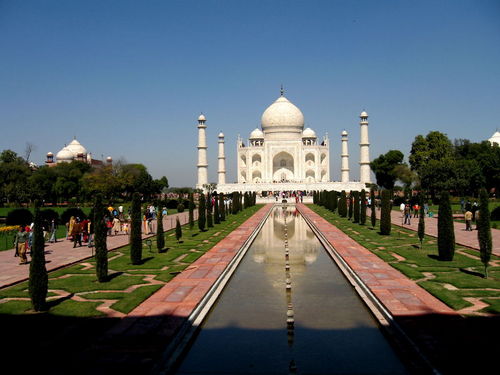
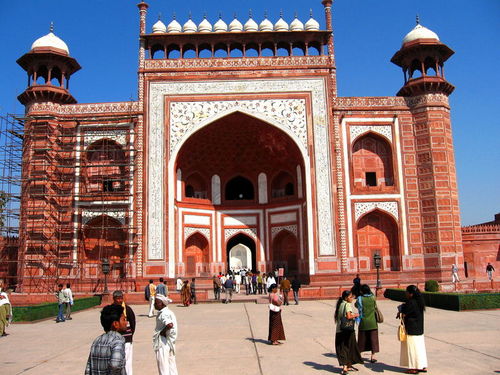
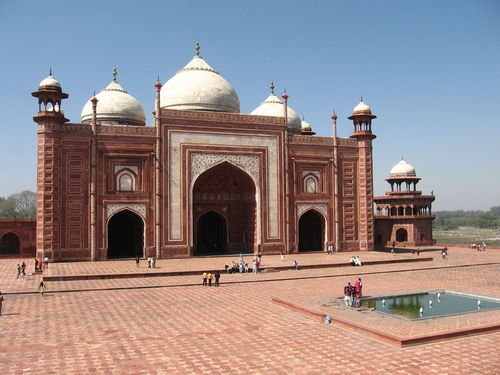
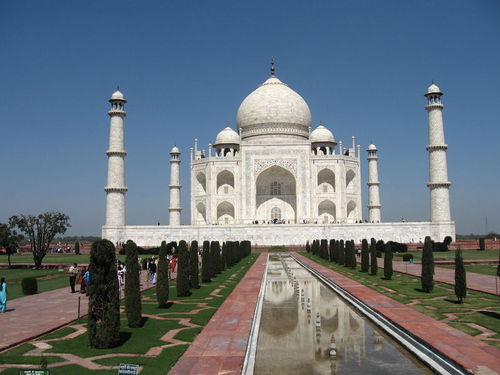
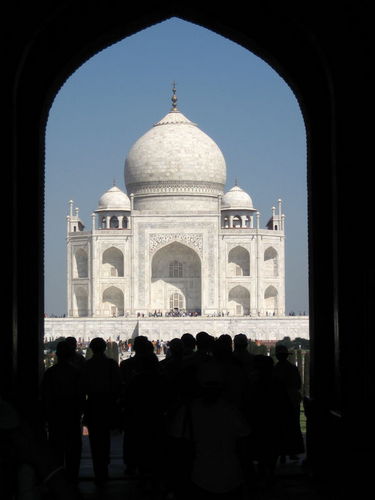
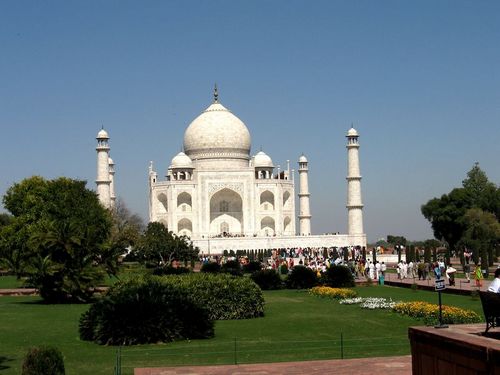
_500x375.jpg)